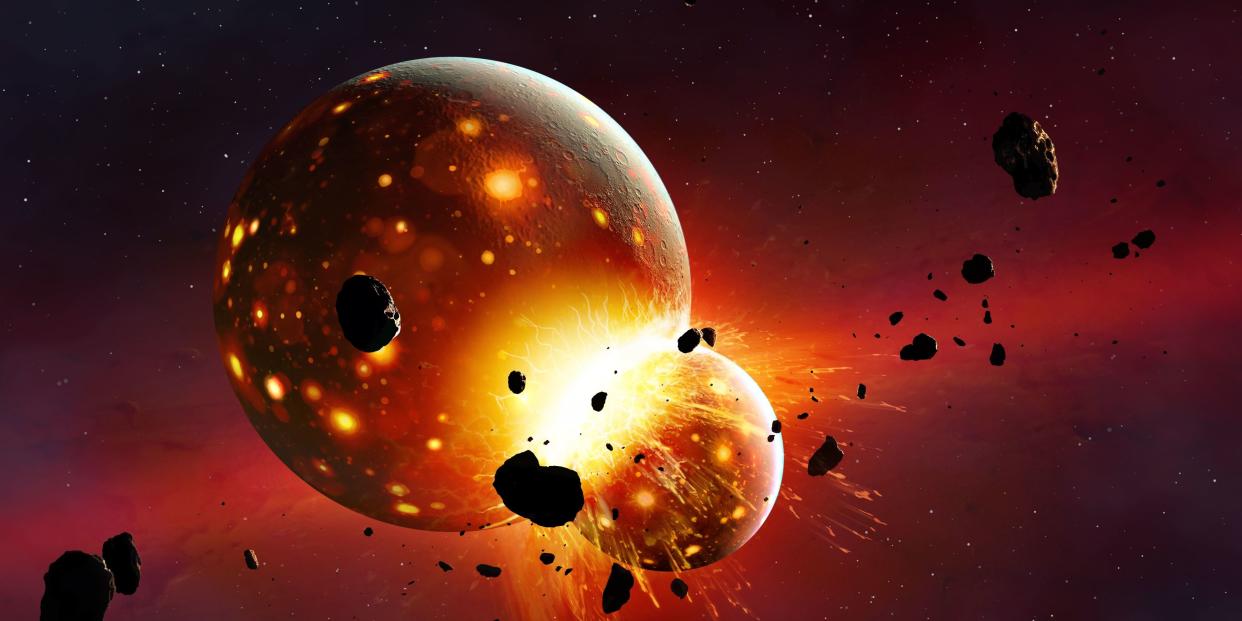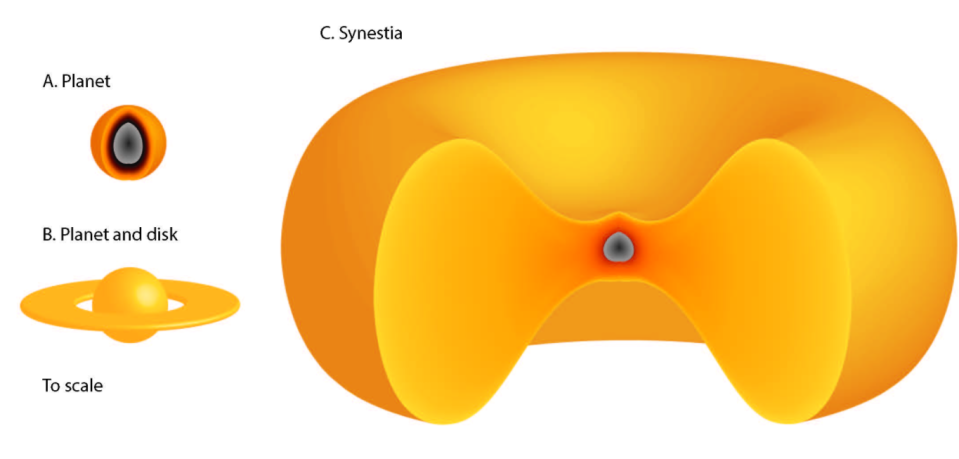Researchers Propose New Name for a Molten Planetary Object

Among the ranks of planets, stars, asteroids, and other celestial bodies, astronomers might soon add the term "synestia." The object is defined in a new paper as a huge, spinning, donut-shaped mass of molten rock, formed when two planet-sized bodies smash into each other. The word "synestia," if accepted by the astronomy community, would provide a label for these objects that are believed to exist throughout the universe, though one has never been observed directly.
Many researchers believe that Earth was a synestia at an early point in its history. Planetary scientists Simon Lock of Harvard University and Sarah Stewart of the University of California, Davis, came up with the concept of a synestia after studying planetary collisions. These collisions are completely destructive, with entire planets vaporizing, melting into molten material, and mixing with each other.

The new object has a much larger volume than the two planets that collided. Made of mostly vaporized rock, with no solids or liquids on the surface, models suggest a synestia would be the shape of an indented disk that resembles a red blood cell or a donut with the center filled in.
"We looked at the statistics of giant impacts, and we found that they can form a completely new structure," Stewart said in a press release.
The mass of the object, and its angular momentum, would be the same as the two planets pre-collision. The researchers compare the merging objects to two figure skaters. From the press release:
Think of a skater spinning on ice: if she extends her arms, she slows her rate of spin. To spin faster, she holds her arms close by her side, but her angular momentum stays constant. Now consider two skaters turning on ice: if they catch hold of each other, the angular momentum of each skater adds together so that their total angular momentum stays the same.
On a solid spinning sphere in space, every point on the sphere is rotating at the same rate-24 hours for one rotation of Earth, for example. But in a synestisa, the material is constantly in flux as it expands and becomes gaseous and molten. Some of the material could more accurately be described as orbiting the synestia, and if the material is moving fast enough, models suggest it will form these donut-shaped objects.
Studying synestias could "lead to new mechanisms for satellite formation," Lock and Stewart argue in their study's abstract. It is possible that the Earth's synestic period led to the formation of the moon, for example.
The name "synestia" comes from "syn-," meaning "together" and "Estia," the Greek goddess of architecture and structures. Although no one has ever directly observed a synestia, Lock and Stewart are optimistic that astronomers could find one in another solar system if they developed search methods for that purpose.
If we find one, these massive molten disks will definitely need a name. We will see if "synestia" sticks.
Source: American Geophysical Union
You Might Also Like

